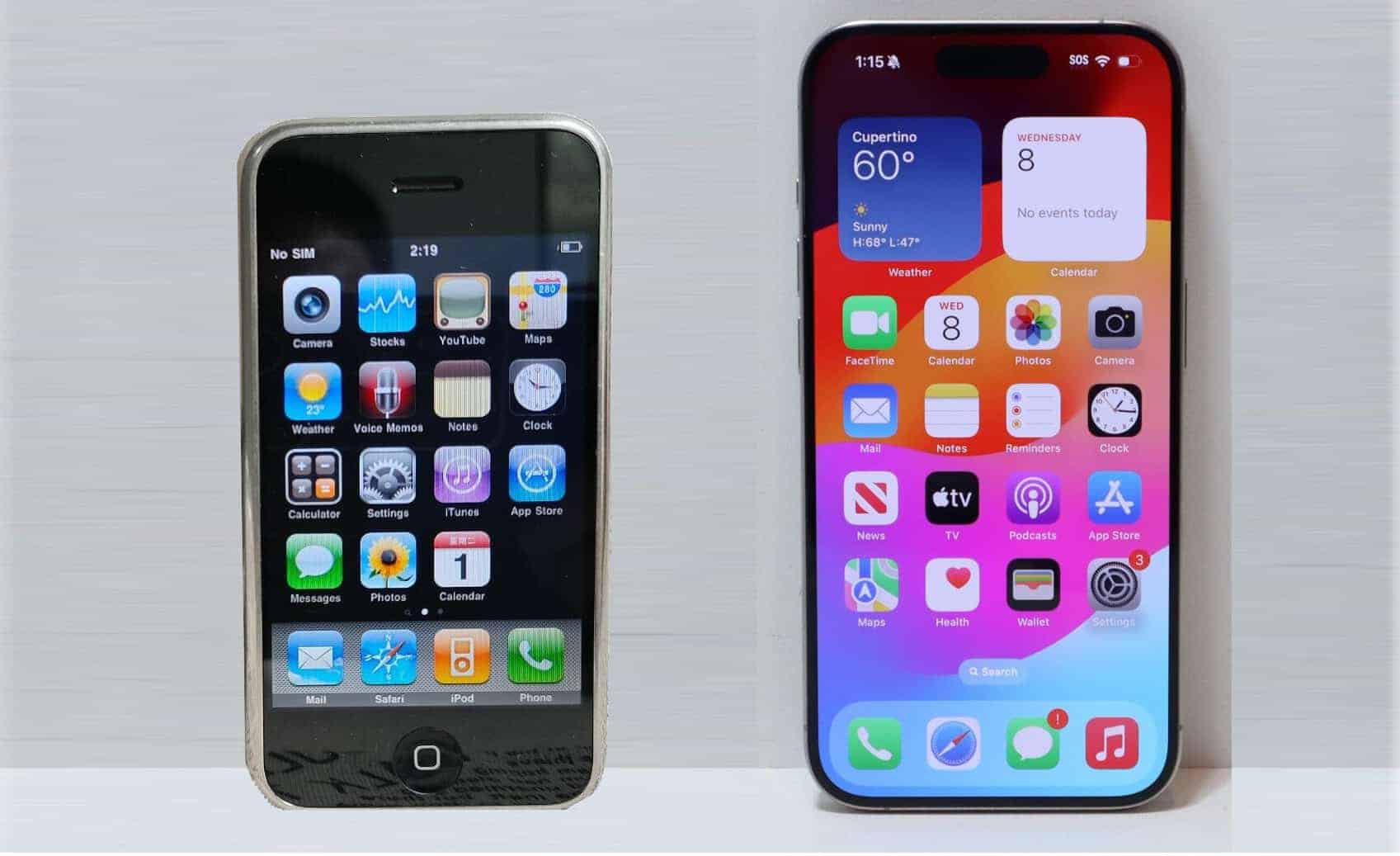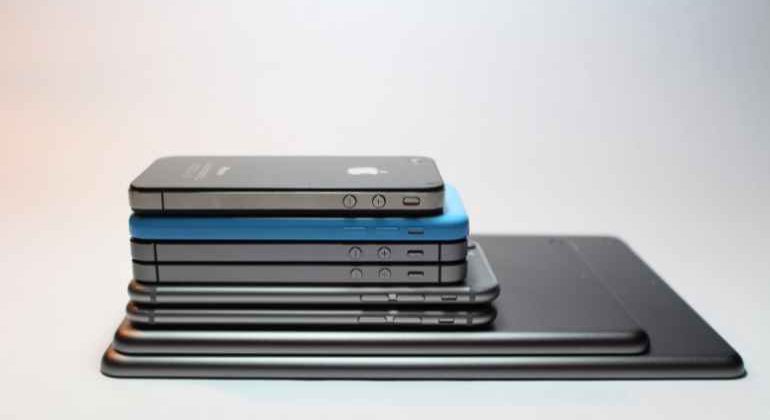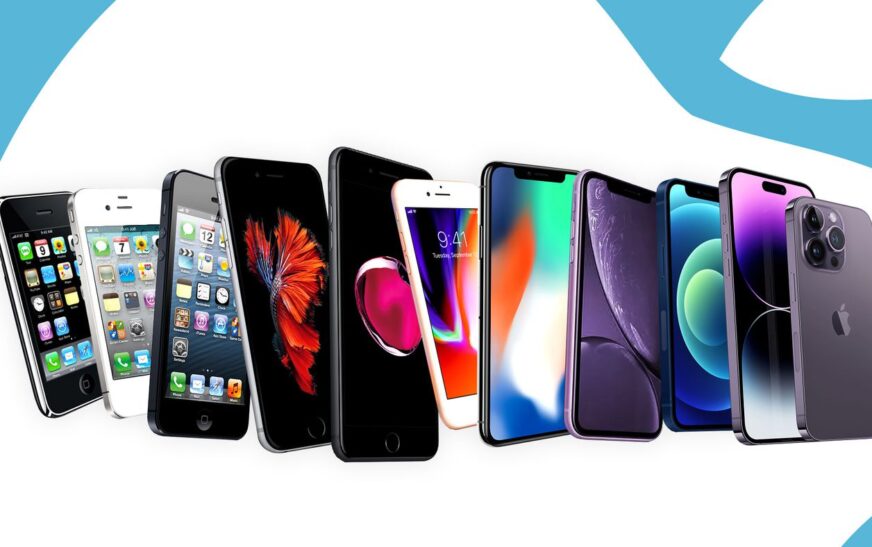Introduction to the iPhone

The iPhone is more than just a smartphone; it’s a symbol of innovation that has transformed the way we communicate, work, and live. Since its debut in 2007, this remarkable device has undergone an incredible evolution, reshaping the tech landscape with every iteration. From its sleek design to groundbreaking features, each generation of the iPhone tells a story of relentless progress and revolution in technology. Join us as we dive into the fascinating journey of the iPhone – how it began, where it’s been, and what lies ahead for this iconic gadget that continues to captivate millions around the globe.
The First Generation (2007-2008)

The first generation of the iPhone, launched in 2007, marked a watershed moment in technology. Apple introduced a device that was unlike anything seen before. The sleek design captivated users instantly.
With its groundbreaking touch interface, the iPhone eliminated physical buttons and changed how we interact with smartphones. This innovation opened up endless possibilities for apps and functionalities.
It featured a 3.5-inch display that showcased vibrant colors and sharp graphics. For many, it was their introduction to mobile internet browsing on an impressive scale.
Equipped with a 2-megapixel camera, it set the stage for future advancements in smartphone photography. Social media integration heralded new ways to connect with others.
In just over a year, this remarkable device laid down the foundation for what would become an iconic product line reshaping communication globally. The world had truly entered the era of smart devices.
The Second Generation (2008-2010)

The second generation of the iPhone marked a pivotal shift in mobile technology. Launched in 2008, the iPhone 3G introduced faster internet connectivity with its support for 3G networks. This upgrade transformed how users interacted online.
Alongside speed improvements, Apple unveiled the App Store. It revolutionized software distribution and gave birth to an ecosystem where developers could create innovative applications. Suddenly, users had access to tools that enhanced productivity and entertainment at their fingertips.
Design-wise, the iPhone 3G maintained a sleek aesthetic but included a plastic back for better signal reception. The addition of GPS functionality further enriched navigation experiences, bridging gaps between technology and daily life.
This era solidified Apple’s position as a leader in smartphones. The competition intensified as other companies scrambled to catch up with this game-changing device. The evolution was clear; smartphones were no longer just phones—they became essential tools in modern society.
The Third Generation (2010-2013)

The third generation of the iPhone marked a pivotal moment in its evolution. Launched in 2010, the iPhone 4 introduced a sleek design with glass panels and a stainless steel frame. Not only did it look stunning, but it also set new standards for smartphone aesthetics.
With the introduction of Retina Display, users were treated to crisper visuals than ever before. Images popped off the screen while text became incredibly sharp and readable. This was a game-changer for those consuming media on their devices.
Moreover, FaceTime made its debut during this period, offering video calls that transformed communication. Suddenly, seeing loved ones face-to-face from anywhere became possible.
iOS updates during these years refined user experience further. Multitasking capabilities allowed apps to run smoothly without draining battery life excessively. The innovations continued to push boundaries in an already competitive tech landscape.
The Fourth Generation (2013-2016)
The Fourth Generation of the iPhone marked a significant turning point in Apple’s journey. Released between 2013 and 2016, this era introduced the iPhone 5s and 5c, showcasing an impressive leap in technology.
The iPhone 5s featured Touch ID, revolutionizing security with a fingerprint sensor. This innovation made unlocking devices more intuitive while enhancing privacy for users. The addition of the A7 chip brought performance improvements too, making apps faster than ever.
Meanwhile, the colorful plastic casing of the iPhone 5c appealed to a younger audience. It offered a vibrant alternative without compromising on functionality.
Apple’s focus on camera quality also intensified during this generation. With enhanced optics and software capabilities, capturing moments became simpler and more artistic.
As these devices hit the market, they set new standards for smartphones everywhere—paving pathways that competitors soon sought to follow.
The Fifth Generation (2016-Present)
The fifth generation of the iPhone marks a significant turning point in smartphone technology. Launched in 2016, the iPhone 7 introduced water resistance and eliminated the headphone jack, prompting a shift towards wireless audio solutions.
With impressive camera enhancements, including optical image stabilization and advanced low-light performance, users began capturing stunning photos with ease. This era also saw Apple’s commitment to augmented reality through ARKit, opening doors for innovative applications that blend digital and physical worlds.
The introduction of Face ID marked a leap forward in security features. Users could now unlock their devices effortlessly with facial recognition—a feature that quickly became an industry standard.
As smartphones evolved further into essential life tools, Apple’s ongoing updates continued enhancing user experience through software improvements while maintaining seamless integration across its ecosystem. The emphasis on privacy has reshaped how tech giants approach data management as well.
Impact on Society and Technology
The iPhone has reshaped the way we communicate and interact with our world. Gone are the days of bulky devices; now, a sleek smartphone fits snugly in our pockets.
Social media thrives on mobile platforms, largely due to the iPhone’s influence. This device has made sharing moments instantaneous and effortless. We can connect with friends across continents in real time.
Education has also evolved through this technology. Students access a wealth of information at their fingertips, fostering a culture of continuous learning.
Moreover, businesses have adapted by embracing mobile commerce. Shopping apps have transformed consumer behavior, making purchases convenient and efficient.
The iPhone’s impact isn’t limited to functionality; it symbolizes innovation itself. It pushes boundaries in design and user experience, inspiring countless competitors to follow suit while setting new standards for what technology can achieve.
Future of the iPhone
The future of the iPhone promises to be nothing short of exciting. With each iteration, Apple pushes boundaries in design and functionality. Rumors suggest a shift towards more sustainable materials. This aligns with global trends emphasizing eco-friendliness.
Moreover, advancements in AI could reshape user interaction. Imagine an iPhone that anticipates your needs before you even articulate them. Voice recognition and machine learning may become seamlessly integrated into daily tasks.
Foldable screens are also on the horizon, offering versatility we’ve only dreamed about until now. Picture a device that transforms from phone to tablet with ease.
Security will likely take center stage too. Enhanced biometric features could ensure your data is safer than ever before.
As technology evolves, so will our expectations for smartphones. The iPhone will undoubtedly continue its legacy as a revolutionary force in mobile technology.
Conclusion
The iPhone has truly transformed the landscape of technology since its debut in 2007. From a simple touch interface to powerful computing capabilities, each generation has built on the last, pushing boundaries and setting new standards. It is more than just a smartphone; it’s become an essential part of daily life for millions around the globe.
This evolution has not only influenced how we communicate but also reshaped various industries such as photography, gaming, and mobile commerce. The impact extends beyond individual users; businesses have adapted to leverage this technology for improved efficiency and connectivity.
Looking ahead, the future of the iPhone appears bright with innovations like enhanced artificial intelligence integration, augmented reality features, and potentially foldable designs on the horizon. As Apple continues to innovate and adapt to changing consumer needs, one thing remains clear: the iPhone will keep revolutionizing our relationship with technology.
As we reflect on its journey so far, it’s evident that what began as a simple phone has turned into a powerful tool that connects us all in ways previously unimaginable.











